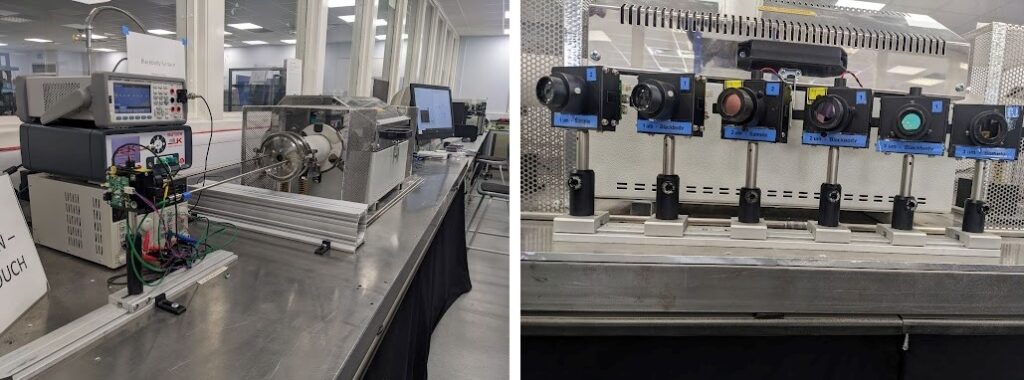Completed: Accurate emissivity characterisation of metals from near infrared to long wave infrared
In collaboration with PyrOptik Instruments Limited
Emissivity is an often-overlooked characteristic of a material; it represents a material’s efficiency to radiate thermal energy. In order to accurately measure the temperature of a process using infrared radiation thermometry, the emissivity of the material needs to be known. Without an accurate temperature measurement, the process cannot be optimised, leading to compromised material quality and increased carbon emissions.
In this work, we have developed an optical technique for the accurate measurement of a material’s emissivity as a function of wavelength and temperature. The technique enables the emissivity of the material to be quantified from the near infrared (NIR) through to the long-wave infrared (LWIR); this was demonstrated within this project for a stainless steel 304 (SS304) sample. Whilst primarily developed for the accurate quantification of emissivity within the metals industry, it can be applied to other sectors within the foundation industries.

This emissivity measurement data can be incorporated into infrared radiation thermometers to enable a more accurate measure of manufacturing process temperature. This data can also be incorporated into heat transfer models and for the optimisation of waste heat recovery. Given the significant amount of energy used to generate the temperatures required within the foundation industries, even a small improvement in the temperature measurement accuracy due to better knowledge of emissivity will result in optimised processes. Ultimately, this will lead to reduced energy usage, lower carbon emissions, and improved material quality, resulting in greater profitability, within the foundation industries.

Dr. Matthew Hobbs m.hobbs@sheffield.ac.uk
University of Sheffield
Published: September 23rd, 2022
Posted in
projects





